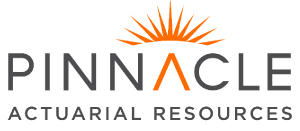
Issues & Answers Special Advertising Section
August 2020
Issues & Answers: The Case for ERM

Rob Walling
Principal and Consulting Actuary
Pinnacle Actuarial Resources

“The current economic climate has given captive insurers an opportunity to look at ERM through new eyes and with new information.”
What impact is the global COVID-19 pandemic having on captive insurers?
It’s forcing almost every captive to be much more thoughtful in evaluating their insurance program and to consider revising their coverage retentions, and coverages. We’re seeing so many different coverages being impacted by COVID and the insurance markets themselves are also having an effect. So it’s a very dynamic period in that there’s no captive that’s just renewing at expiring.
Has the economic downturn highlighted the need for enterprise risk management (ERM) for captives?
Not so much the economic downturn, per se, but the cyclical turn in the insurance market, the hardening of the insurance market. We’re seeing reinsurance rates go up substantially. That was occurring even before COVID came to roost in the U.S. But now, the additional claims associated with COVID are exacerbating the problem. The economic conditions in the insurance market and in the reinsurance market are really highlighting the need for ERM. You’re faced with a situation where you’ve got to decide between a 50% increase in your property insurance premiums or moving some of that coverage into a captive. A lot of the ERM that’s going on right now is really assessing the economic risks that keep you up nights and rethinking how you design your overall risk financing program between your captive and the commercial policies you buy.
Is the role of the actuary more critical during times of economic uncertainty?
There’s an opportunity for an actuary to play a greater role. Whether the actuary steps up to that challenge remains to be seen, but there’s certainly an opportunity. A situation like the current crisis is begging for data, and it’s very challenging from a data perspective. There’s not a lot in the actuarial toolkit that makes looking at the historical data and using it to accurately project what 2020 is going to look like an easy or routine process.
What advice are you giving to captive managers that you weren’t giving them a year ago at this time?
It’s really important to be very intentional when we’re going through these very dynamic periods. So, the more time that you can have for evaluating the insurance program, really understanding where your coverage gaps might be, having a thorough understanding about what the commercial markets are going to be doing with your renewals all go into the process of making sure that your overall risk financing program is well-designed. Making sure that your coverage gaps that you’ve either known about for a time or identified through the COVID experience are being addressed, and making sure you’re making the right financing decision between financing and exposure in a captive versus keeping it in the commercial insurance market.

